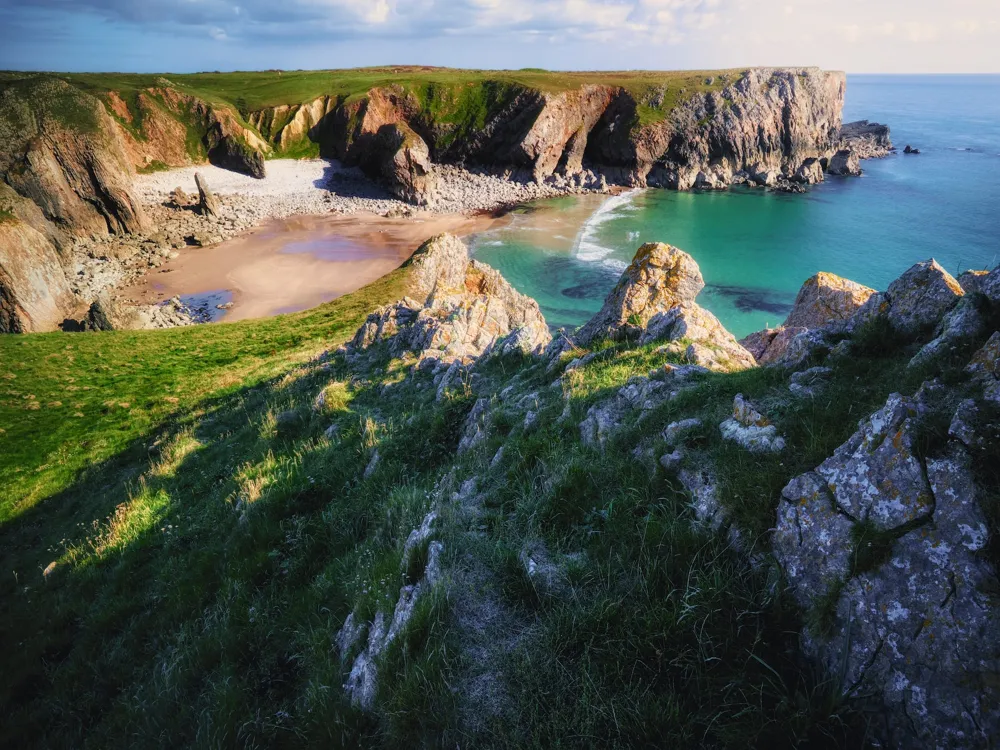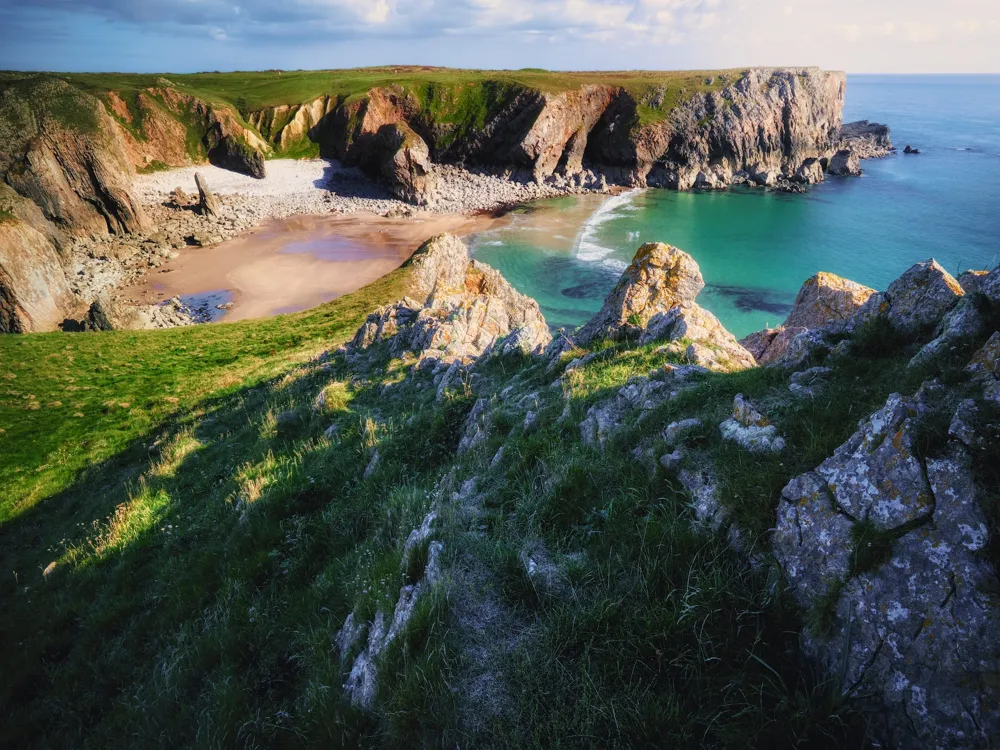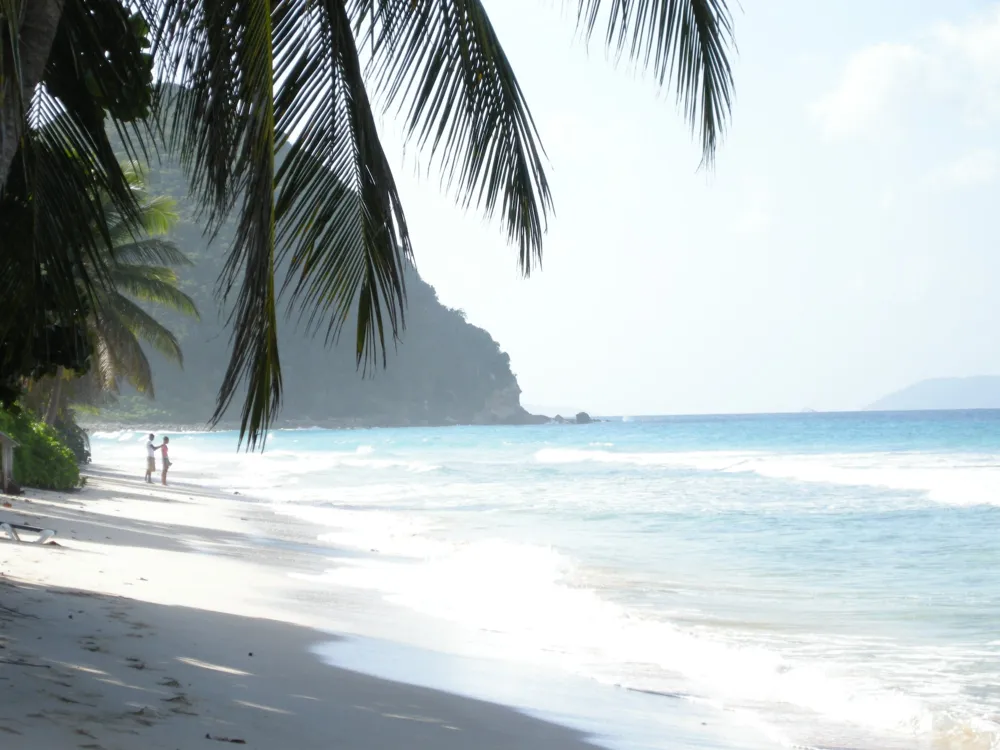Halong Bay, a UNESCO World Heritage Site since 1994, is one of the most breathtaking natural landscapes in the world. Located in the Quang Ninh province of Vietnam, Halong Bay is renowned for its emerald waters and thousands of towering limestone islands topped with rainforests. The name 'Halong' translates to 'where the dragon descends into the sea,' and the bay's mystical scenery certainly lives up to this mythical aura. Covering an area of over 1,500 square kilometers, it features nearly 2,000 islets and islands, each with its own unique shape and geomorphological structure. The formation of Halong Bay dates back to around 500 million years ago, involving various geological processes including down-warping, erosion, and marine transgression. The bay is not only a place of extraordinary natural beauty but also of great geological and cultural value. The limestone karsts are evidence of Earth's long history, each standing as a testament to the complex history under the surface. Visitors to Halong Bay are often struck by the serene and surreal beauty of the seascape. It's a perfect blend of rugged karst landscapes and tranquil waters. The bay is also home to several endemic species of flora and fauna. Its biodiversity includes 14 floral species and about 60 faunal species. Moreover, the bay is associated with various cultural and historical legends, adding a rich tapestry of tales and myths to the already captivating landscape. Exploring Halong Bay offers a chance to not just witness the breathtaking natural beauty but also to delve into the local culture and history. The floating villages, with their traditional ways of life, provide a fascinating glimpse into the local customs and practices. These villages, like Vung Vieng and Cua Van, are integral to the cultural fabric of Halong Bay, showing a harmonious balance between humans and nature. The architecture of Halong Bay is not marked by buildings but by its natural limestone formations and caves, each a marvel in itself. These geological formations have taken millions of years to form and stand today as natural sculptures, striking in their beauty and complexity. The most famous caves like Hang Sung Sot (Surprise Cave) and Hang Dau Go (Wooden Stakes Cave) offer spectacular stalactite and stalagmite formations, each telling a story of geological history and natural artistic beauty. Hang Sung Sot, for instance, is known for its large chambers and impressive rock formations. The cave's interior feels like a vast, natural amphitheater, adorned with stalactites and stalagmites that have formed over millennia. Another remarkable cave, Hang Dau Go, features three large chambers and is famous for its ancient stalactites, some of which are tinted with a rich blue or emerald due to the presence of copper and other minerals. Beyond the caves, the architectural 'design' of Halong Bay extends to its floating villages and fish farms. The design of these floating homes and markets is a testament to the ingenuity and adaptability of the local people, who have for centuries lived in harmony with the bay's tidal rhythms. The houses, often made from bamboo and wood, are built to withstand the elements, floating on barrels or rafts and anchored to avoid drifting away. These structures are a fascinating blend of practical design and traditional Vietnamese culture. The limestone pillars and islets themselves are natural sculptures, each uniquely shaped by wind and water over time. Notable formations include the Fighting Cocks (Hòn Trống Mái), the Stone Dog, and the Incense Burner, which are symbolic to the locals and have been given imaginative names based on their shapes. These natural formations, coupled with the ever-changing light and weather conditions, create a visually stunning and ever-evolving architectural landscape. The best time to visit Halong Bay is during the spring (March to May) or fall (September to November). During these periods, the weather is more temperate and the skies are clearer, providing excellent conditions for sightseeing and photography. When visiting Halong Bay, it is essential to pack light and smart. Essentials include sunscreen, hats, insect repellent, comfortable walking shoes, and a waterproof bag. Don't forget to bring a camera to capture the stunning scenery. Selecting the right cruise is crucial for your Halong Bay experience. Research and choose a reputable company. Consider the length of the trip, the size of the boat, and the itinerary to ensure it meets your expectations. While enjoying the beauty of Halong Bay, it's important to respect the local culture and environment. Be mindful of your waste disposal, avoid disturbing wildlife, and respect the local customs and traditions. Safety should always be a priority. Always listen to safety briefings, wear life jackets when required, and be cautious when swimming or kayaking, as the bay can have strong currents. Reaching Halong Bay is relatively straightforward. The nearest airport is in Hanoi, the capital city of Vietnam. From Hanoi, you can choose to travel to Halong Bay by bus, private car, or shuttle, which takes approximately 3-4 hours. Alternatively, for a more scenic route, you can opt for a seaplane from Hanoi that offers stunning aerial views of the bay, making for an unforgettable experience. Another option is to take a train from Hanoi to Hai Phong and then a ferry to Halong Bay. This route offers a glimpse into the rural landscapes and daily life outside of Vietnam's bustling cities. Regardless of the mode of transportation, the journey to Halong Bay is part of the adventure and offers its own unique experiences and sights.Overview of Halong Bay
Architecture of Halong Bay
Tips When Visiting Halong Bay
Best Time to Visit
Packing Essentials
Choosing a Cruise
Respecting Local Culture
Safety Precautions
How To Reach Halong Bay
Hang Trong
Halong Bay
₹ 15,260 onwards
View halong-bay Packages
Halong-bay Travel Packages
View All Packages For Halong-bay
Top Hotel Collections for Halong-bay

Private Pool

Luxury Hotels

5-Star Hotels

Pet Friendly
Top Hotels Near Halong-bay
Other Top Ranking Places In Halong-bay
View All Places To Visit In halong-bay
View halong-bay Packages
Halong-bay Travel Packages
View All Packages For Halong-bay
Top Hotel Collections for Halong-bay

Private Pool

Luxury Hotels

5-Star Hotels

Pet Friendly






















